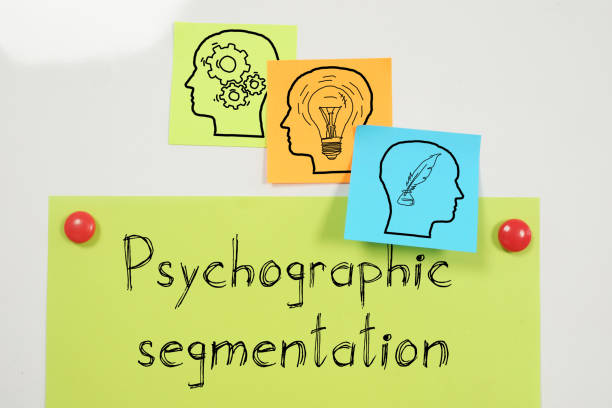Exploring Psychographic Segmentation Strategies for Marketing Success

Introduction
Ever felt like a brand was speaking directly to you? Like they understood your lifestyle, interests, and values? Well, that’s the magic of psychographic segmentation at work. This article unravels the intriguing world of psychographic segmentation, explaining its mechanics, significance, and application in marketing.
Psychographic Segmentation: An Overview
What Is It?
Psychographic segmentation in marketing involves sorting people into groups based on their individual characteristics, attitudes, values, and hobbies. This approach is distinct from demographic segmentation, which categorizes people based on concrete factors like age, gender, or income.
Why Is It Important?
Psychographic segmentation allows brands to craft messages that resonate deeply with their target audience. By understanding their audience’s lifestyle, beliefs, and activities, businesses can make a stronger emotional connection, enhancing their marketing efficacy.
The Pillars of Psychographic Segmentation
1. Activities, Interests, and Opinions (AIO)
A widely adopted method to segment audiences, the AIO framework looks into a person’s daily activities, hobbies, and their views on various subjects. A person who practices yoga, eats vegan food, and cares about being environmentally friendly, is someone you can promote eco-friendly products to.
2. Lifestyle Classification
This approach categorizes consumers based on their lifestyle. Different people have different purchasing patterns, behaviors and preferences.
3. Social Status
Society often has a hierarchy, and understanding where your target audience fits can guide marketing strategies. High-end companies cater to wealthy customers, while affordable brands might aim their products at the average income group.
4. Personality Traits
Just like humans have varied personalities, so do brands. Matching a brand’s personality with that of its consumers can create powerful brand loyalty.

Methods to Gather Psychographic Data
1. Surveys and Questionnaires
One of the most common tools, these can be tailored to understand consumer behaviors, interests, and more.
2. Social Media Analysis
By observing a person’s activity on social media sites, companies can learn about their preferences, dislikes and more.
3. Feedback and Reviews
A goldmine of information! Customers often reveal their preferences, lifestyles, and values when they leave feedback.
Advantages of Psychographic Segmentation
1. Personalized Marketing Campaigns: Personalized advertisements are more relatable to the audience.
2. Enhanced Customer Loyalty: By meeting the specific needs and values of consumers.
3. Better Product Development: Knowing what customers want results in the creation of products that are in demand.
4. Effective Resource Allocation: By focusing on the most lucrative segments, brands can use their resources more efficiently.
Case Studies: Brands Excelling with Psychographic Segmentation
1. Apple
Apple offers more than just electronic devices, they sell a way of life. They target individuals who value innovation, sleek design, and premium quality, which is evident in their advertising.
2. Lululemon
This brand understands its audience’s love for fitness and wellness. They’re not only offering athletic clothing, but they also promote a lifestyle.
3. Starbucks
Starbucks offers a cozy corner for students, professionals, or anyone wanting a break. They’ve nailed the “third-place” concept in their psychographic segmentation.
Potential Pitfalls and How to Avoid Them
1. Over-segmentation: While it’s good to be specific, dividing your audience too much can dilute marketing efforts.
2. Reliance on Stereotypes: It’s essential to base segments on solid data and not preconceived notions.
3. Not Revisiting Segments: As society evolves, so do its values and interests. Regularly update your segments to stay relevant.

FAQs
- How is psychographic segmentation different from demographic segmentation?
While demographic segmentation groups people based on physical or tangible traits like age or income, psychographic segmentation dives deeper, looking at personal interests, beliefs, and lifestyles.
- Can small businesses benefit from psychographic segmentation?
Absolutely! Regardless of size, any business that aims to connect better with its audience can benefit from psychographic insights.
- Is it expensive to implement this kind of segmentation?
While some methods can be costly, there are budget-friendly ways like surveys or social media analysis that small businesses can use.
- Do all brands need to use psychographic segmentation?
While beneficial, it depends on the brand’s goals. For broad-based products, it might not be as critical as niche products.
- How often should a company revisit its psychographic segments?
It’s a good practice to review every year or two. With changing social trends, it’s vital to keep the segments updated.
- Is psychographic data more valuable than demographic data?
Both have their place. While demographic data gives a broad overview, psychographic data offers a deep dive into consumer behaviors and preferences.
Conclusion
Psychographic segmentation is a valuable and potent tool that helps brands connect better with their customers. By grasping and valuing their beliefs, how they live, and what they like, brands can make personalized advertisements that fully connect, products that people love, and long-lasting relationships. In a world full of advertisements, this would help your brand stand out from the crowd.
External Links/ Sources:
